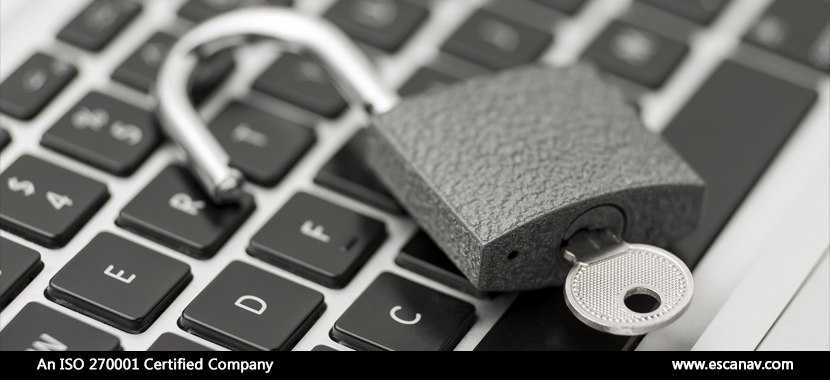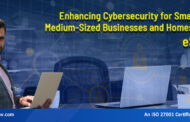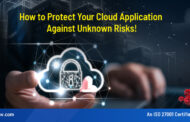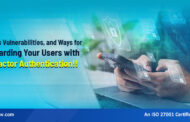Due to the ongoing pandemic, majority of employees across the world have been confined to the security of their houses. This has led to an increase in the indulgence by the masses in the cyberspace, which gives threat actors an opportunity to prey on the less aware.
By the passing day, users have been receiving emails from unknown sources claiming to offer insurance, lottery tickets, or advertisements. These emails usually require the user to click on a link to avail said offers. These offers are nothing but a means for the hackers to phish for the user’s login credentials.
No one wants any confidential information such as credit card numbers or account passwords to be misused or their systems to be infected with harmful ransomware.
Consequently, our security experts have listed down a few tips to secure your digital presence –
Passwords –
Setting an easy password that can be second-guessed by anyone is the most common mistake users make. Attackers happily capitalize on such mistakes. Hence, it is advisable to set strong alphanumeric passwords with different combinations of upper and lower case letters along with the use of special characters. Use different passwords for every different account.
You can try remembering these passwords by the use of logic, write them down or enlist the help of a password manager. Also, it’s important that you never use the same password again.
Addressing Email Security –
The most common medium used by attackers to furnish users with phishing links, viruses, and malicious content to download is through emails. Most users get substantial information through emails and since they are usually stored on the cloud, they are prone to future attacks as well. That is why it is important to keep emails secured from infiltrations and attacks.
In order to gain further control over your inbox, you can go to the settings of your email account and gain further control over sent emails such as set a time period until which you can undo sending an email and get notified instantly when an unknown device accesses your emails.
Or you can always enlist the service of eScan’s Mailspam for mail servers or Anti-spam feature that is embedded in all of our products to secure your email accounts from phishing or malicious/compromised websites without accessing any of your emails.
Beware of suspicious links –
Keep away from unverified links.
Threat actors usually present fake links as secure and use phishing techniques to get your sensitive information such as bank account details or login id and password.
Some of these links have the capability to execute a code that gets your device’s network information and can alter the metadata in the header as well as the content whenever you send information. They can also attach download links to emails or web pages that can drop malware in your systems.
Ensure you don’t click on any malicious links and keep an eye out for your downloads, to know if your device is being slowed down by a malware running in the background.
Use a reliable Antivirus software –
The easiest of all the steps an yet the most underrated one. A reliable Antivirus software like eScan’s Total Security Suite can protect your device from various kinds of malicious attacks. Its premium features are worth the buck as your device will be more secure from pinging unreliable websites and downloading from unknown sources.
Use a VPN to secure your network details –
A Virtual Private Network shields your network’s true identity and protects your device from being tapped into. It’s safe to use a VPN when you are using a public network to access the internet. This way no one will be able to trace the location or your devices IP address, your communication will be secure and will be routed through VPN’s server.
Perform Periodic Backups –
If you perform periodic backups and upload your data to a trusted and secure cloud server or save it in some external storage, you will not be vulnerable to any loss in the unfortunate event of a malware corrupting your data or if the data on your device is encrypted by a ransomware.
The security incident will be addressed by simply resetting your device and by restoring your data from your backup source. eScan’s eBackup feature also helps users in performing this step without any hassles.
Use Security Tools –
You can find various OS-based security tools online, that can be installed on your system. These tools help you keep track of all the activity in your network, encrypt all the data you send and receive, scan files for malware before downloading them, look for potential points of attacks, and much more.
The tools will guide you on what steps to take to secure your device by attacking your own device and identifying the weaknesses.
Clearing Cache and Browsing History –
Browsers use information like your passwords and user ids are stored in cookies, web pages are stored as a cache for their own analysis purposes. Hence, it’s advised that you clear cache, cookies and browsing history on a regular basis and erase all such information for good.
Use Account Manager –
To avoid your email being spammed by websites that require you to subscribe you to their newsletters or advertisement emails when you sign up or want to access a document or a video which prompts you to sign up and you do so while disregarding the security risks, you can simply create a separate email ID that you can use with unsafe websites if you want to. You can use some account managing software that keeps track of which email you have used to sign up on which website, so things don’t get complicated for you to organize.
Use Multi-Factor Authentication –
Multi-factor authentication simply means that you have to go through multiple phases of authentication before you can access to any of your digital accounts. Through this process, user authentication is strengthened and no brute force attack can hamper your privacy.
It also takes care of any possible data leak or data corruption. With eScan’s Two Factor Authentication feature enabled, the system will be protected with basic system login and eScan 2FA. eScan 2 Factor Authentication is available for –
- Local System Login
- RDP Logon
- Safe Mode Login
- System Lock/Unlock
- Custom Web Application (Intranet or Cloud-based)
With the fast-growing services across the internet, online threats are ever-increasing. However, your privacy is of the utmost importance. Therefore, be sure that you do your part by following the above guidelines and securing your digital presence.
To read more, please check eScan Blog







